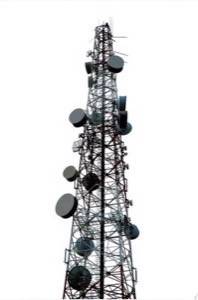The performance of mobile networks is one of the biggest issues facing cellular carriers, application developers and users. All four major carriers in the United States claim spectrum paucity and users are demanding the same type of performance on their mobile devices that they would find on through their desktop browsers. Something needs to give. While there is no silver bullet to curing network woes, there are ways to make the best of an increasingly tough situation.

Akamai represents one such solution. One of the original optimization platforms for the Web, the Cambridge, Mass.-based company has recognized mobile as a sector ripe for optimization. It is taking a layered approach working from both the application and infrastructure levels to ease the burden of the network and give consumers the performance they expect.

The Need to Optimize
Verizon recently said that the carrier likely run out of capacity on its LTE network by the end of 2013. For a network that is still relatively young, that is a very quick period to reach full capacity. AT&T has been crying poor about spectrum issues since it announced its attempt to buy T-Mobile for $39 billion last year. Sprint is undergoing several spectrum pinches and its ongoing issues dealing with both Clearwire and the ill-fated LightSquared. T-Mobile itself does not have the spectrum to fully build out its own LTE network and may have to resort to licensing spectrum from the other carriers while building up the efficiency of its HSPA+ network.
“I just read in the last week that Verizon is going to be out of 4G bandwidth by the end of 2013. To me that sounds like it is insane that the 4G bandwidth would be maxed out in the next 24 months,” said M.J. Johnson, heading of product marketing for Akamai Aqua Mobile Accelerator. “The amount of data that is being blown over mobile networks is just dramatically accelerating. There is huge need for fixed line infrastructure for providing optimizations and that is what we are introducing with Mobile Accelerator and there is also need within the carriers themselves.”
And that is the name of the game: efficiency. Akamai is working from each end to create efficiency for mobile applications and the carrier’s pipes. Today it is announcing a new initiative distinctly designed for mobile optimization: Aqua Mobile Accelerator. The new project is a brand of Akamai’s Dynamic Site Accelerator (DSA) program specifically designed for applications delivering loads over HTTP which can be both mobile websites and native applications.

“The matrix as we see it is we can help provide performance benefits whether it is the delivery of a mobile website or a native app that has HTTP connectivity and there is probably a benefit certainly for those individuals that are using those communications channels through a cellular network or through Wi-Fi as well,” said Johnson.
How It Works
The Mobile Accelerator has two distinct features. The Akamai Mobile Protocol designed to increase carrier efficiency and Mobile Detection and Redirect for the application side.
The Mobile Protocol works with how the initial Transmission Control Protocol is established between the device and the carrier infrastructure. Akamai evaluates the IP address of the GGSN (Gateway GRPS Support Node) on a mobile device to determine if it is coming from a cellular connection. If it is, Akamai can substantiate and set up a TCP connection, a handshake, to accommodate some of the shortcomings of the mobile network. All of the inherent packet loss and data retransmission and some of the challenges associated with delivery over a wireless network. Akamai is working both with the carriers and the infrastructure providers like Ericsson to optimize the network.
Mobile Direction and Redirect is built on top of Akamai’s traditional offering, its “Intelligent Platform” that pulls and caches content from mobile Web servers onto servers that are closer to gateway nodes between the public Internet and carrier infrastructure. In this way it is very much like Akamai’s DSA product, just optimized for mobile devices.
“We would identify it as an iPhone and say, yes, this is a mobile device, a mobile browser and using the Mobile Detection and Redirect that the customer has set up with our service, they would have set up ahead of time, for iOS devices have the redirection go to iphone.company.com,” Johnson said. “So, from the edge, once we have identified that as an iPhone, we would issue a HTTP redirection response that goes back to the iPhone. The iPhone receives a redirection and goes back to the iphone.company.com site.”
Optimizing Efficiency Everywhere
Akamai is not alone in attempting to optimize Web performance. It is a bit ahead of the curve against the likes of Cisco and IBM in terms of mobile acceleration, but this should be thought of as a group challenge facing the entire mobile industry and not an arms race among individual entities. Mobility benefits everybody, from the casual consumer to the enterprise IT guy to the salesman on the road. Network congestion and spectrum issues are real and the ecosystem needs to figure out remedies sooner than later.

Google is working on network speed and optimization through its SPDY protocol. The promise of SPDY is a great one but this is not something that Google can solve overnight, if at all. Amazon is working on creating a more efficient Content Delivery Network through its Amazon Web Services but that very rarely touches on mobile outside of the Silk browser on the Kindle Fire.
What Akamai is trying to do is find the easiest solution to move data packets based on HTTP. Almost all mobile wesbsites are based on HTTP and many native applications communicate through the standard as well. Akamai’s approach is to act as traffic cop, creating efficient ramps where content can be cached and then sent along its way. While this is an improvement over the efficiency on the operators’ current networks, there is much that can be done to streamline the process.
There are limited options to creating more bandwidth for users to enjoy their mobile experience. One is to clear up more spectrum for the carriers to build upon. This is possible but faces distinct regulatory challenges. Spectrum auctions are possible as is using white space. In conjunction with freeing up spectrum is optimizing the network to make it as efficient as possible. Right not the ecosystem is nowhere near achieving those goals to perfection and will continue to evolve together going forward.
Cell tower image courtesy of Shutterstock










